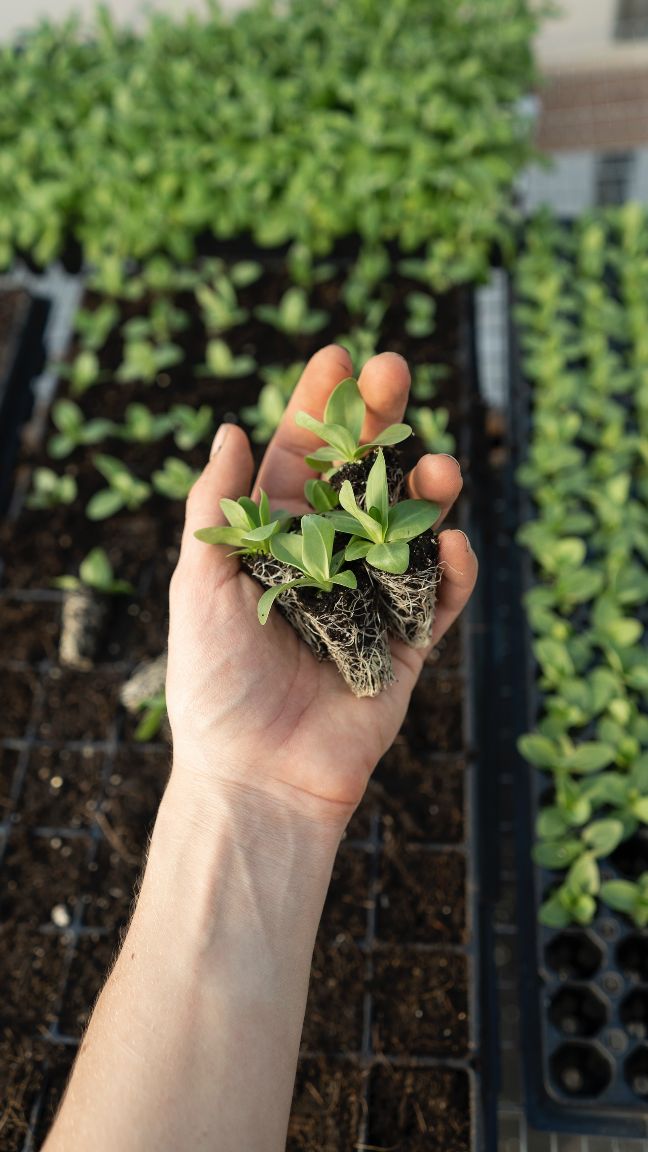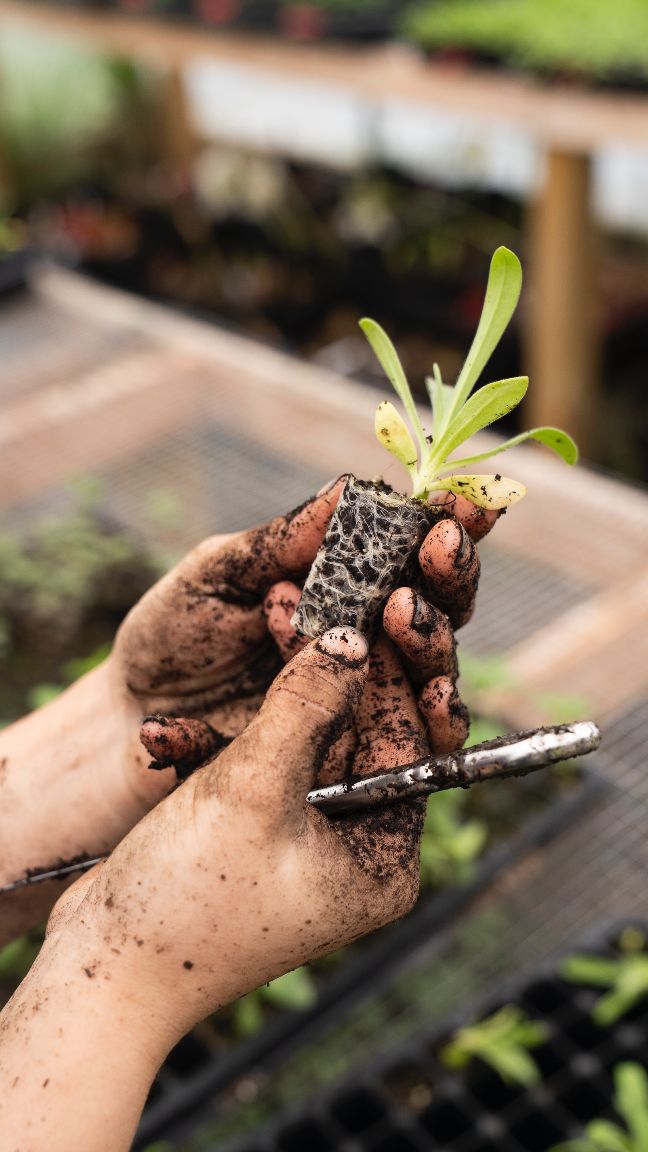Scientists show how to turn lunar soil fertile for agriculture, marking a groundbreaking leap toward establishing sustainable moon bases. The journey to moon agriculture begins with the realization that, for prolonged human habitation on the moon, a consistent food source is imperative. The conventional notion of planting crops in lunar soil seems impractical, but recent advancements hint at a promising future.
In a recent breakthrough, scientists have unveiled a pioneering approach to make lunar soil fertile. Their key innovation involves introducing bacteria that enhance phosphorus availability, a crucial nutrient for plant growth. This discovery, detailed in the journal Communications Biology, showcases the potential to turn inhospitable lunar regolith into a bio-friendly substrate for cultivating plants in future lunar greenhouses.
Table of Contents
- The Lunar Soil Experiment: Unveiling the Power of Microbes
- Building the Lunar Greenhouse: A Sustainable Vision
- Towards a Lunar Ecosystem: Addressing Long-term Needs
- Key Points
- Conclusion:
The Lunar Soil Experiment: Unveiling the Power of Microbes
Conducting experiments in a Chinese laboratory, researchers treated simulated moon soil with three bacterial species: Bacillus mucilaginosus, Bacillus megaterium, and Pseudomonas fluorescens. The results were astonishing – plants grown in treated soil exhibited longer stems, extensive root systems, and more robust clusters of leaves compared to their counterparts in untreated soil. The transformative action of these bacteria rendered the soil more acidic, unlocking phosphorus from insoluble minerals and making it available for plant absorption.
Lead author Yitong Xia from the China Agricultural University emphasizes the significance of these findings. The potential to use microbes to convert lunar regolith into fertile soil opens doors to sustainable plant cultivation on the moon, a critical element for future lunar bases.
Building the Lunar Greenhouse: A Sustainable Vision
As we envision establishing manned lunar bases, the question of sustenance looms large. Xia highlights the economic impracticality of relying solely on Earth-moon transportation for essential resources. Instead, he proposes a lunar greenhouse as a viable solution, drastically reducing the need for resource-heavy rocket transports.
Xia elaborates on various methods for lunar plant cultivation, including transporting horticultural soil, hydroponic systems, and the use of soil substitutes like hydrogels. However, he underscores the high cost associated with these plans due to extensive rocket carrying capability. In contrast, the microbial improvement technique presented in this study achieves the same goal with significantly reduced carrying capacity, paving the way for a more economically feasible lunar agriculture system.
Towards a Lunar Ecosystem: Addressing Long-term Needs
Considering the moon’s scientific and economic potential, the establishment of manned lunar bases becomes inevitable. The study suggests that a self-sustaining plant cultivation system on the moon could fulfill long-term food and oxygen requirements for human crews. Plants, through photosynthesis, not only provide nourishment but also produce oxygen, a crucial element for sustaining life.
In conclusion, the innovative approach of leveraging microbial enhancement to make lunar soil fertile represents a giant leap towards establishing a sustainable lunar ecosystem. As we embark on this cosmic journey, the prospect of moon agriculture brings us closer to a future where humankind can thrive beyond the bounds of Earth.
Key Points


- Introduction to Lunar Agriculture:
- Scientists are exploring ways to make lunar soil fertile for sustained agriculture, crucial for future human habitation on the moon.
- Phosphorus Enhancement via Bacteria:
- Researchers introduce bacteria to lunar soil, enhancing phosphorus availability, a vital nutrient for plant growth.
- Experiments with simulated moon soil show remarkable results, with treated soil promoting longer stems, extensive roots, and robust leaf clusters.
- Microbial Transformation of Lunar Regolith:
- Three key bacteria—Bacillus mucilaginosus, Bacillus megaterium, and Pseudomonas fluorescens—make lunar soil more acidic, releasing phosphorus from insoluble minerals.
- This microbial approach transforms lunar regolith into a bio-friendly substrate for potential plant cultivation in lunar greenhouses.
- Economic Feasibility of Lunar Agriculture:
- Establishing manned lunar bases necessitates a sustainable food source, challenging with conventional Earth-moon transportation.
- The proposed lunar greenhouse, utilizing microbial soil improvement, offers an economically viable solution, reducing the need for extensive rocket carrying capability.
- Long-Term Vision for Lunar Ecosystem:
- The study envisions a self-sustaining plant cultivation system on the moon, addressing long-term food and oxygen needs for human crews.
- Plants, through photosynthesis, not only provide nourishment but also generate oxygen, crucial for sustaining life on the moon.
- Comparative Studies and Challenges:
- Previous studies using Arabidopsis thaliana suggest that lunar soil needs enhancement for robust plant growth compared to Earth soil or volcanic ash.
- Simulated regolith from the Changbai mountains in China serves as a substitute for genuine lunar soil due to its scarcity on Earth.
- Diverse Approaches to Lunar Agriculture:
- Xia outlines various lunar plant cultivation methods, including transporting horticultural soil, hydroponic systems, and the use of soil substitutes like hydrogels.
- Emphasis on the economic sustainability of the microbial improvement technique compared to other resource-heavy plans.
Conclusion:
The innovative microbial approach represents a significant step towards establishing a sustainable lunar ecosystem, allowing humanity to thrive beyond Earth.
Moon agriculture opens new possibilities for future lunar bases, reducing dependence on Earth for essential resources.
These key points provide an overview of the groundbreaking advancements in lunar agriculture and the potential for transforming the moon into a self-sustaining habitat for humanity.
